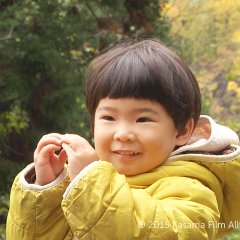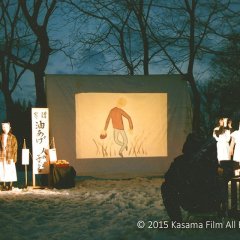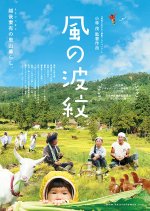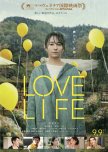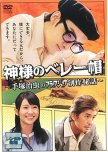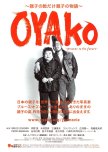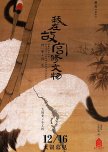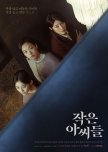- Italiano
- English
- magyar / magyar nyelv
- עברית / עִבְרִית
- Titolo Originale: 風の波紋
- Conosciuto Anche Come: Kaze no Hamon
- Regista: Kobayashi Shigeru
- Generi: Famiglia, Documentario
Recensioni

slice of life (derogatory)
I watched this as part of the Japan Film Festival Online hosted by the Japan Foundation, and I am grateful for the opportunity to view the film even if I did not particularly enjoy it.The supposed point of Dryads in a Snow Valley (orig. name "Ripples of the Wind") is to follow a couple who had moved from The City into this rural village known for its heavy snowfall. They moved prior to the 2011 Great East Japan Earthquake, and we watch the villagers assist and advise as the couple rebuilds their home. From here, we're shown village traditions and ways of life such as farming, traditional dyeing, their winter festivals/habits -- and through this, we're supposed to observe a stark contrast between the warm human interactions and the harsh cold environment they live in. We are also supposed to glimpse into Japan’s social issues such as depopulation.
You can tell by the way I'm writing that I did not experience this effect at all, and I blame the director/editing team. The documentary was filmed over the course of five years, and the content was presented to the viewer in an unorganised and sloppy manner. Visually and seasonally unrelated scenes were often cut right after each other, to the point where you could not tell where scenes were supposed to relate to each other chronologically or even thematically. It was like slice of life on steroids, so disparate . The presentation maybe would work better in an episodic format, but definitely not as a film. As it stands, I'd argue there is no story in this documentary at all. Dryads has its merits as a moodboard, but who needs a 1hr39min long moodboard?
All that being said, the sound mixing was insane. Very vivid and raw. In some scenes, it had an ASMR-esque quality. I hope the sound team won awards for that.
Within Japan, Dryads was well-received. Young people who were disillusioned with life in The City were inspired to move to rural areas and don their way of living. The film gets a lot of airplay in rural film festivals. I am an American living in one of our biggest metropolises, so I acknowledge that there are likely nuances and cultural mores I am not perceiving that prevent me from enjoying the movie to that extent. However, there are certainly better portrayals of rural Japan that are as realistic (if not as raw) in dramas and other documentaries. Living on the River Agano (1992) comes to mind, though I acknowledge that is not as recently produced as this film is and may not be as attractive for that reason.
Questa recensione ti è stata utile?



